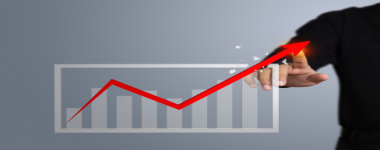by Michael Lombardi, Profit Confidential
The verdict is in…
Last week, at the end of its regularly scheduled meeting, the Federal Reserve said:
- It would continue to reduce the amount of money it creates each month. The Fed said it will be out of the money printing business by the end of this year. By that time, the Federal Reserve will have created more than $4.0 trillion new American dollars (out of thin air).
- And when the Treasuries and mortgage-backed securities the Fed has bought mature, they will roll them over-which means they will just continue collecting interest on the securities they bought as opposed to taking the cash when they mature. (Source: “Press Release,” Federal Reserve, September 17, 2014.) I doubt the Fed has any choice on this. If the Fed doesn’t roll over the Treasuries it has bought, who would buy them when they hit the market?

The Federal Reserve also provided its economic projection on where it expects the federal funds rate, the key U.S. interest rate, to be down the road:
- The central bank believes the U.S. economy will grow between two percent and 2.2% in 2014, then grow in the range of 2.6% to three percent in 2015. From there, it goes downhill. In 2016, the Federal Reserve projects more of the same-U.S. economic growth of between 2.6% and 2.9%. In 2017, the U.S. growth rate is projected to be sluggish and in the range of 2.3% to 2.5%. (Source: “Economic Projections,” Federal Reserve, September 17, 2014.) Hence, we are looking at four more years of slow growth.
- A majority of the members of the Federal Open Market Committee (FOMC) believe the federal funds rate should move into the one percent to two percent range in 2015 from its current 0.25%. Then in 2016, rates should increase to between two percent and three percent. In 2017, the range would be three percent to four percent. (Source: Ibid.)
If the Federal Reserve goes ahead with this, then by the end of 2015, interest rates would be 500% higher than today. In 2016, they would be 900% higher. By 2017, the interest rates set by the Federal Reserve would be 1,300% higher than the 0.25% they first set back in 2008.

